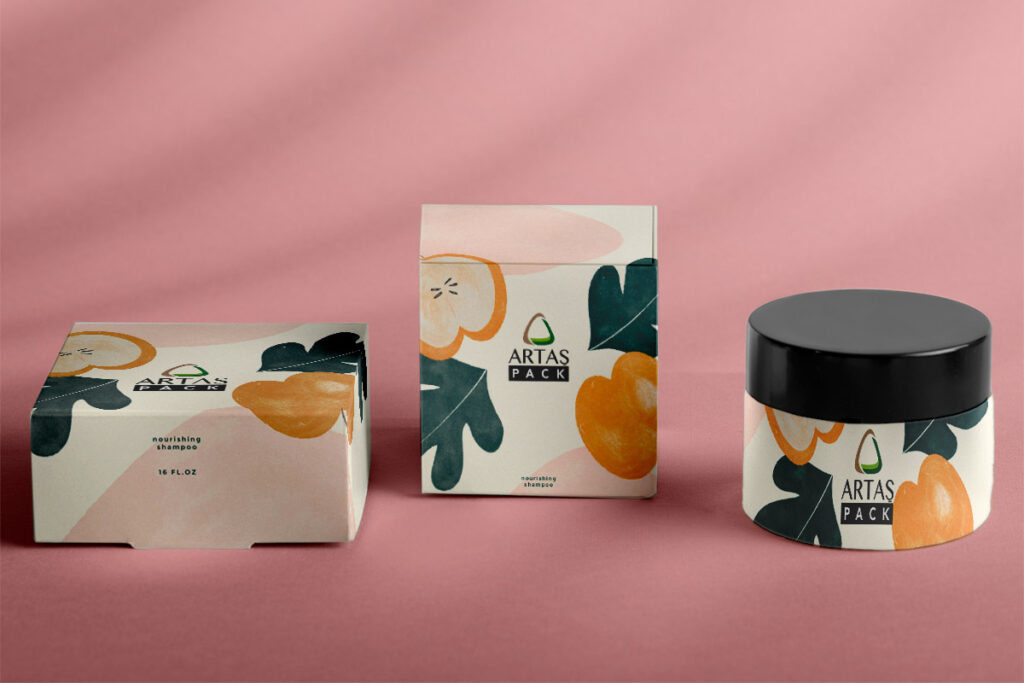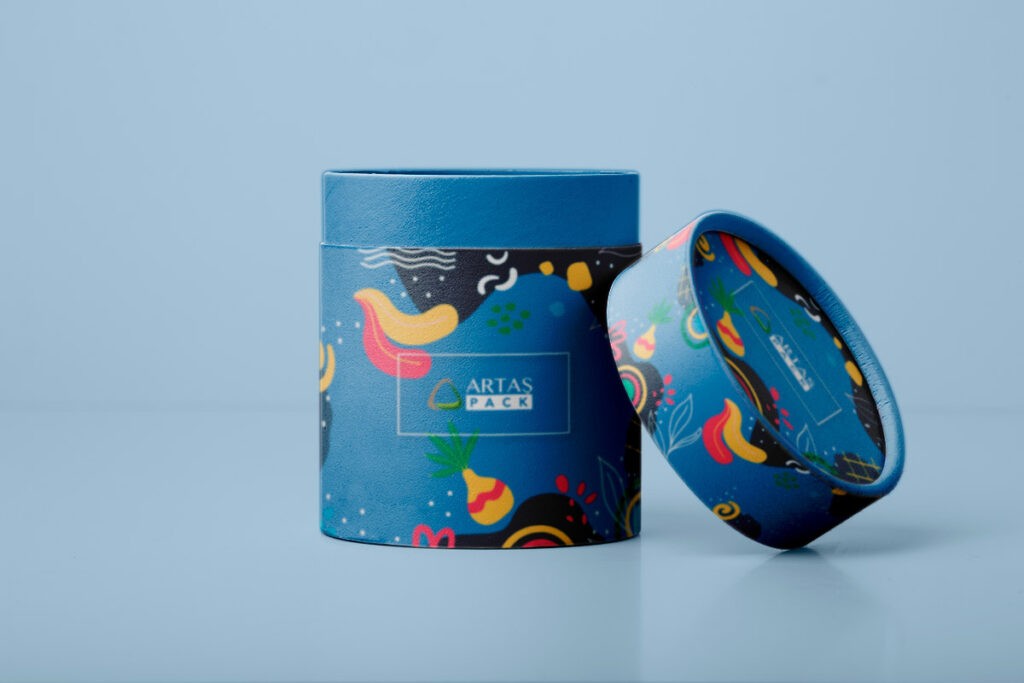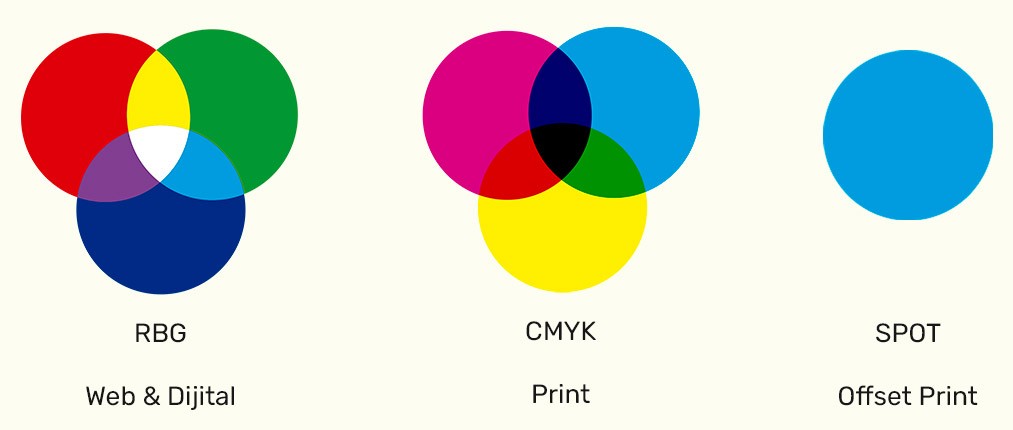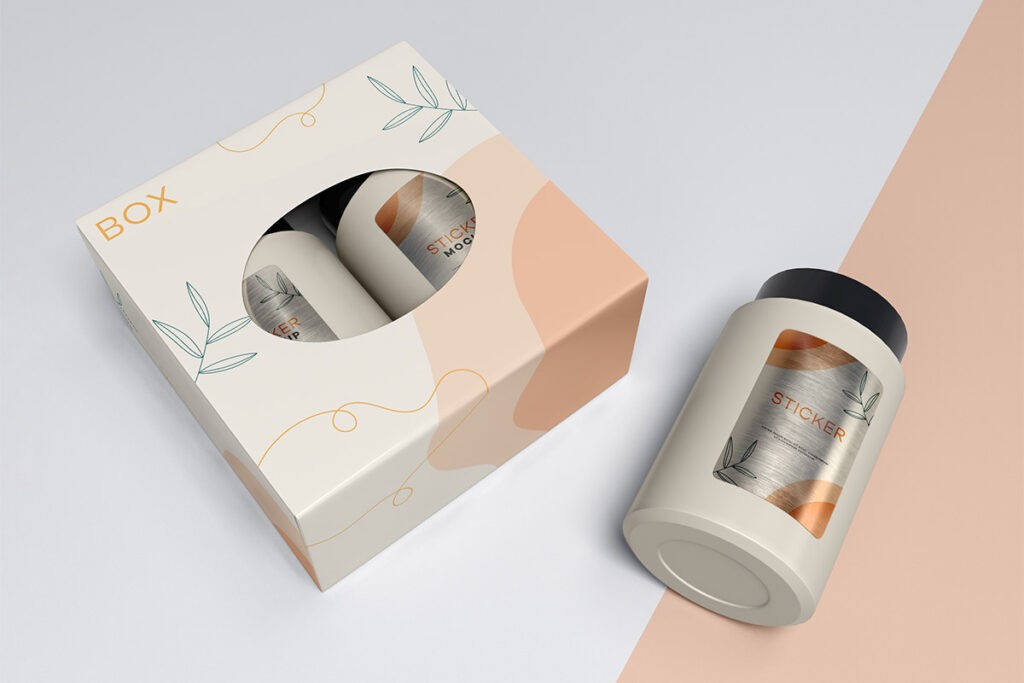With this comprehensive guide to product packaging, you will learn about the latest trends and best practices in the field of product packaging. In the ever-evolving landscape of retail and e-commerce, the role of product packaging has become more critical than ever in influencing consumer decisions. A well-crafted packaging strategy not only protects the product but also serves as a powerful tool to enhance brand perception and customer experience.

The Impact of Effective Packaging
A study conducted by The Paperworker shed light on the significant influence of packaging on consumer behavior. Remarkably, 52% of online consumers express a higher likelihood of returning to a business if their product arrives in high-quality packaging. Furthermore, an impressive 74% of consumers are inclined to share images of aesthetically pleasing packaging on their social media platforms.
The implications are clear – effective product packaging design can create substantial leverage for your business. However, translating innovative packaging ideas into reality can be a formidable task, given the multitude of factors at play. To assist businesses in navigating this complex process, we’ve crafted a comprehensive guide that covers every step in a straightforward manner.
Preparation: Laying the Foundation for Success
Before embarking on the packaging journey, a meticulous assessment of your product packaging needs is imperative. This involves delving into key considerations:
- Exploring Options: Understand the diverse packaging options available in the market.
- Production and Shipping Costs: Evaluate the financial aspects of production and shipping.
- Best Solution: Determine the optimal packaging solution for your specific product.
Assessing Your Packaging Needs: Answering Critical Questions
To streamline the process, answer four pivotal questions:
- Product Type: Tailor packaging to suit the unique characteristics of your product, considering size, shape, and weight.
- Volume Requirements: Determine the quantity needed, aligning with sustainability goals and demand projections.
- Budget Allocation: Efficiently allocate the budget, covering packaging, production, shipping, and additional fillers.
- Launch Timeline: Consider anticipated launch dates and current inventory levels, leaving room for potential shipping delays.
Note: For further assistance during the preparation stage, our product specialists are available to address any queries.

Measuring: Precision in Dimensions
Accurate box dimensions are the cornerstone of successful packaging. Measurements, including length, width, and depth, must be taken from the inside of the box for precision. Minimizing dimensions not only ensures a snug fit for the product but also contributes to reducing transportation damages and environmental impact.
Exploring Types of Product Packaging: Tailoring Solutions to Your Needs
Diverse types of product packaging cater to varying business requirements:
- Folding Carton: A lightweight and flexible option available in various materials like raw kraft, Solid Bleached Kraft (SBS), Clay Coated Board (CCNB), White Kraft, and Black Kraft.
- Paper Tubes: A durable choice suitable for cylindrical products, providing optimum support and durability.
- Rigid Box (Premium): Ideal for high-end, luxurious packaging, utilizing chipboard for increased thickness compared to folding carton.
- Other Styles: Consider alternatives like paper bags and poly mailers for specific product lines.
Eco-Friendly Options: Sustainable Packaging for a Greener Approach
Opt for eco-friendly choices such as kraft (brown) for folding carton and corrugated packaging. These materials are durable, environmentally friendly, and often use 100% recycled materials, aligning with the growing trend of sustainable supply chain practices.
Using Box Inserts: Enhancing Protection and Organization
Incorporate box inserts for additional product protection and organization. Explore three popular choices:
- Foam Inserts: Ideal for protecting fragile items during shipping, adding a touch of luxury to the unboxing experience.
- Plastic Tray Inserts: Lightweight and flexible, offering high-definition details through thermoforming.
- Cardboard Inserts: A cost-effective option that can be printed on, serving as custom inserts, dividers, or partitions.
Understanding Printing Options: Bringing Your Design to Life
Choose from three primary printing options:
- Offset Printing: Offers superior image quality, suitable for mass production and applying special processes.
- Digital Printing: Provides quick turnaround times and affordability for low-volume jobs, suitable for folding carton and corrugated boxes.
- Flexography Printing: Economical for large quantities, best for simple structures and one or two colors.
Understanding Colors in Printing: CMYK vs. PMS
Distinguish between CMYK (Cyan, Magenta, Yellow, Key/Black) and PMS (Pantone Matching System) color modes. CMYK allows unlimited artistic possibilities, while PMS ensures consistent color codes with an additional production cost.

Choosing a Coating: Adding Finishing Touches
Select coatings such as lamination (matte & gloss), AQ (Aqueous) coating, UV coating, or varnish based on desired finish, protection, and budget constraints.
Exploring Special Finishes: Elevating Your Packaging Design
Add impact to your packaging through special finishes:
- Foil Stamping: Introduces distinct looks with metallic, matte gloss, holographic, or special effects features.
- Spot UV: Applied to specific areas for enhanced logos or artwork elements.
- Embossing: Adds dimension and depth to packaging, commonly used for impactful logo designs or product names.
- Debossing: Creates a depressed imprint, offering a similar effect to embossing.
- Window Patching: Adds a visual element, allowing customers to see the product before purchase.
Packaging Design: Capturing Attention and Eliciting Response
A well-designed packaging is essential to draw attention and evoke a positive consumer response. Collaboration with a designer or a manufacturer offering packaging and structural design services streamlines the process for efficient outcomes.
Preparing Dielines: Blueprint for Packaging Design
Transferring your design to the structure template, known as the dieline, is a crucial step. Use design tools like Adobe Illustrator, Artioscad, or Adobe InDesign to create precise dielines that act as blueprints for packaging design. Understand the orientation of the dieline to ensure accurate placement of artwork.
Artwork Preparation: Ensuring Optimal Quality
Follow a step-by-step guide to set up your artwork file, ensuring it is in a vectorized format for optimal quality. Vectorized files are editable and scalable without losing image quality. Use rasterized files only for photographic images, maintaining a resolution of 300 DPI for optimal quality.

Prototyping: Ensuring Accuracy Before Full Production
For added assurance or team finalization, consider requesting a custom sample box or 3D mock-up. Prototyping is especially valuable for large orders, preventing design, spelling, or printing errors before full-scale production.
Production and Shipping: Bringing Your Packaging to Life
Once all aspects are finalized, your product packaging is ready for full-scale production. Sit back, relax, and await the arrival of your packaging. The timeline for receiving your shipment depends on various factors, including the requested timeline, package size, and delivery method. Account managers will keep you updated on the production and shipping process, ensuring you remain on track with your order.
Maintaining Inventory Expectations and Schedule
For businesses requiring consistent packaging orders, it’s advisable to communicate with product specialists to map out inventory expectations and schedules. This proactive approach facilitates a healthy inventory flow
, allowing manufacturers to anticipate your needs and deliver on time.
Conclusion: Launching Your Product Packaging Strategy
With this comprehensive guide, we’ve covered every fundamental and detail to simplify the product packaging process. Whether you’re a seasoned business or embarking on your first packaging venture, this guide serves as a roadmap to navigate the intricate world of product packaging. If uncertainties persist or questions arise, our product specialists are readily available to provide guidance and support.
In summary, the guide covers:
- Preparing for Your Packaging: An assessment of product packaging needs to determine options and the best solution.
- Measuring the Box: Critical dimensions for effective packaging, including a step-by-step video guide.
- Type of Packaging: Choosing the right packaging type tailored to product needs.
- Printing Options: A breakdown of digital, offset, and flexography printing for better understanding and decision-making.
- Coating and Special Processes: Exploring a wide variety of coatings and special finishes for enhanced protection and design.
- Packaging Design: The importance of well-designed packaging in capturing consumer attention and fostering a positive response.
- Dieline and Artwork Preparation: Guidelines for creating precise dielines and preparing artwork for optimal quality.
- Prototyping: Requesting prototypes for accuracy and finalization before full production.
- Production and Shipping: The culmination of the packaging journey, with regular updates from account managers.
I hope you have been guide to product packaging instructions. Still unsure how to approach your first product packaging? Don’t hesitate to reach out to our product specialists for personalized assistance and guidance tailored to your unique business needs.
Contact us to get a price quote and detailed information about the packaging boxes we produce as Artaş Pack.
Phone : +90 (533) 580 23 38
E-mail : sales@artaspack.com

